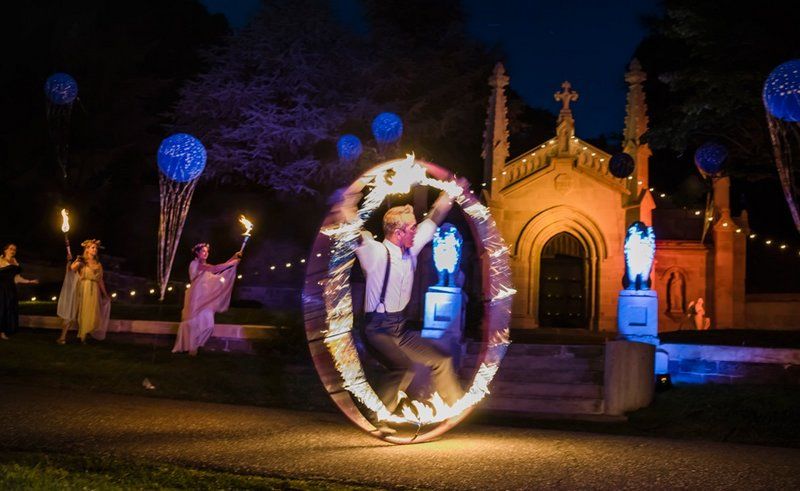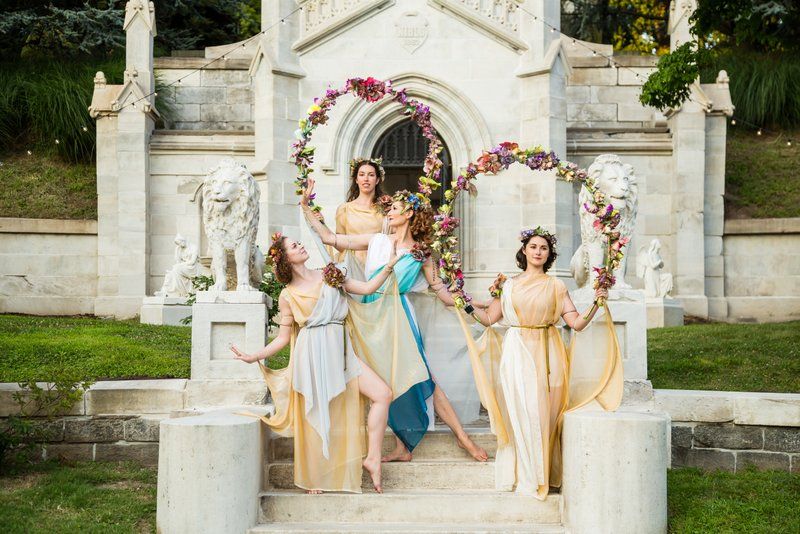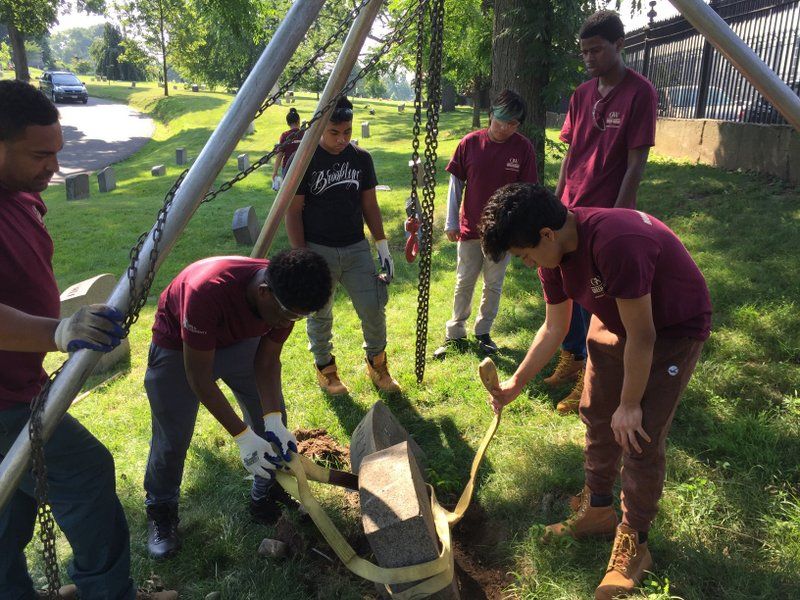Tour Louis Armstrong's House+ More Exclusive Member-Only January Events
Go inside the home of a jazz legend, learn how to make a subway map, spend an evening in a private art collection, and more!


The historic Green-Wood Cemetery, in Brooklyn, is asking one simple question: Are you Mrs. Niblo? As the National Historic Landmark site prepares to host its summer spectacular, A Night at Niblo’s Garden, it seems the role of Mrs. Niblo has yet to be cast. Green-Wood is turning to social media and the hashtag #IAmMrsNiblo to find its missus from among its social media fans and followers.
In era-appropriate dress, Mrs. Niblo will have a few key tasks to attend to as she strolls alongside her husband, Mr. Niblo, played by the Benjamin Feldman, author and the originator of the Niblo’s Garden event at Green-Wood. Mrs. Niblo’s stage direction includes: twirl a parasol; clap for the performers delighting your guests with Victorian era spectacles; entertain visitors at your waterfront mausoleum.
To get you in the right mindset, we’ve rounded up 10 fun facts about Mr. Niblo, Mrs. Niblo and his fantastical pleasure dome. Auditions can be submitted on Instagram using #IAmMrsNiblo; full details here. Mrs. Niblo will receive two free “friends and family” tickets to each performance.
Opened in 1838, Green-Wood’s landscape of winding paths, glacial ponds and hilly terrain attracted thousands of urbanites who craved a connection with nature. It also inspired the creation of Central Park, which was begun 19 years later. There are over 570,000 “permanent residents” of Green-Wood Cemetery, where burials have been made since 1840. That’s an underground city roughly the size of Milwaukee. The Cemetery is still available today for burials, cremations, and memorial niches for cremated bodies.
Become an Untapped Cities Insider to get special access and discounts to A Night at Niblo’s Garden and read on for fun facts!

Photo by Maike Schulz, courtesy The Green-Wood Historic Fund
In 1828, Irish-born William Niblo opened “Niblo’s Garden” amphitheater on Broadway between Houston and Prince on the site of the former Columbian Gardens. The venue was an immense pleasure dome flanked by grand gardens, strung with lights and adorned with fountains. At 3,200 seats, it was the Radio City Music Hall of its day. In stark contrast to rowdy bars and theaters that dominated the downtown scene, Niblo’s Garden was an establishment defined by its class and refinement. Ladies were permitted to enter only if escorted by a man (so classy!).
Notable performances at Niblo’s Garden include Verdi’s opera, “Macbeth,” which premiered there in 1850. Also, America’s very first musical, William Wheatley’s “The Black Crook” (about an evil magician with scoliosis) premiered at Niblo’s Garden in 1866. It has been said that the polka was introduced there in 1844.
The first Niblo’s Garden was built in 1828, rebuilt (after a fire) in 1849, and again in 1872. The offices of Henry Havermeyer, sugar refining magnate and another “permanent resident” of Green-Wood Cemetery, replaced Niblo’s Garden in 1895. Today the block is occupied by Ricky’s, Express and Forever 21.

Photo by Maike Schulz, courtesy The Green-Wood Historic Fund
Niblo’s wife, Martha King Niblo, died in 1851 and was entombed in an elaborate mausoleum at Green-Wood Cemetery. Mr. Niblo made daily visits to the family mausoleum, bringing friends, picnicking on its front lawn, and even stocking the nearby pond with goldfish (inspiration for Green-Wood’s tribute “A Night at Niblo’s Garden”).
In 1868, Niblo spent the night in the mausoleum, involuntarily, after a strong wind blew the door shut when he was there reading alone. William and Martha Niblo’s mausoleum is located on Crescent Avenue, directly in front of Crescent Water in the Southwest section of the Cemetery.
Submit your audition to be Mrs. Niblo on Instagram! Full details here.

The highest point in Brooklyn is in Green-Wood Cemetery: Battle Hill, where in August 1776, General George Washington commanded the revolutionary troops in the Battle of Brooklyn against the British. It was the first battle fought after the signing of the Declaration of Independence on July 4th of that same year.

Photo courtesy of The Green-Wood Historic Fund
The largest original Black burial ground in New York City, in a city where many Black cemeteries were displaced by development, is in Green-Wood Cemetery. Over 1,300 burials were made in Green-Wood’s “Freedom Lots” in the 19th century. Cemetery records provide information on age, cause of death and more. Other Black burials at Green-Wood, for families of means, include Susan Smith McKinney Steward, James Weldon Johnson, Jesse Hamilton and more.
Auditions can be submitted on Instagram using #IAmMrsNiblo; full details here. Next, check out the 5 Weirdest Tombs in Green-Wood Cemetery and the Top 10 Secrets of Green-Wood Cemetery
Subscribe to our newsletter